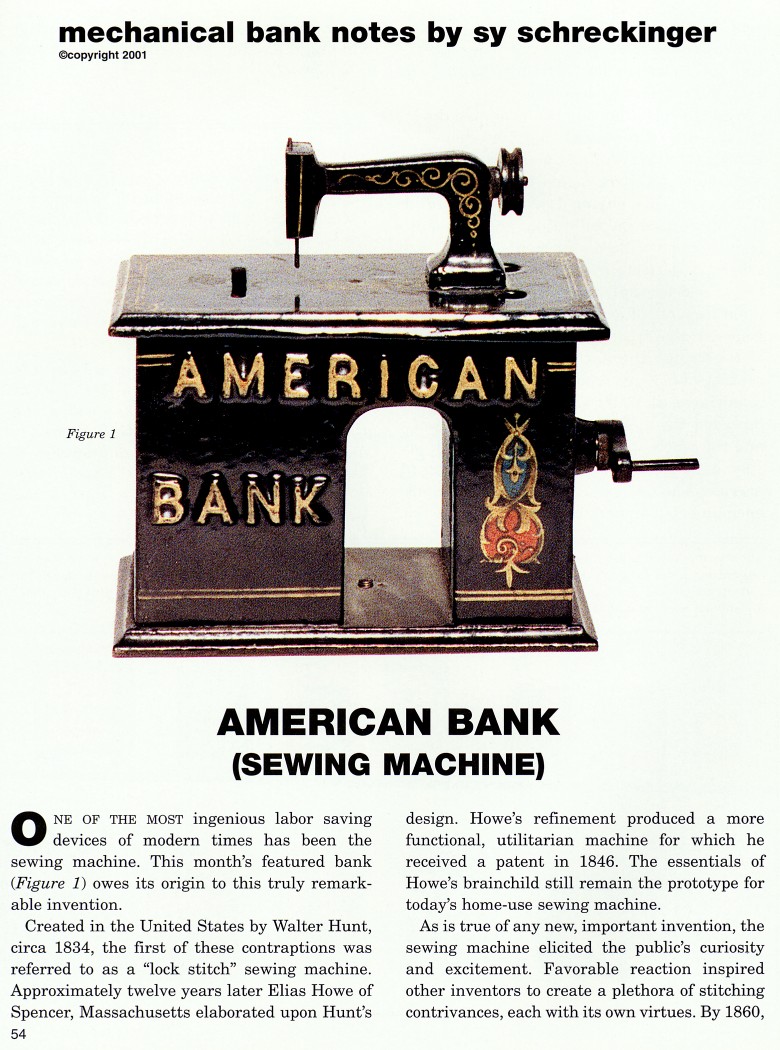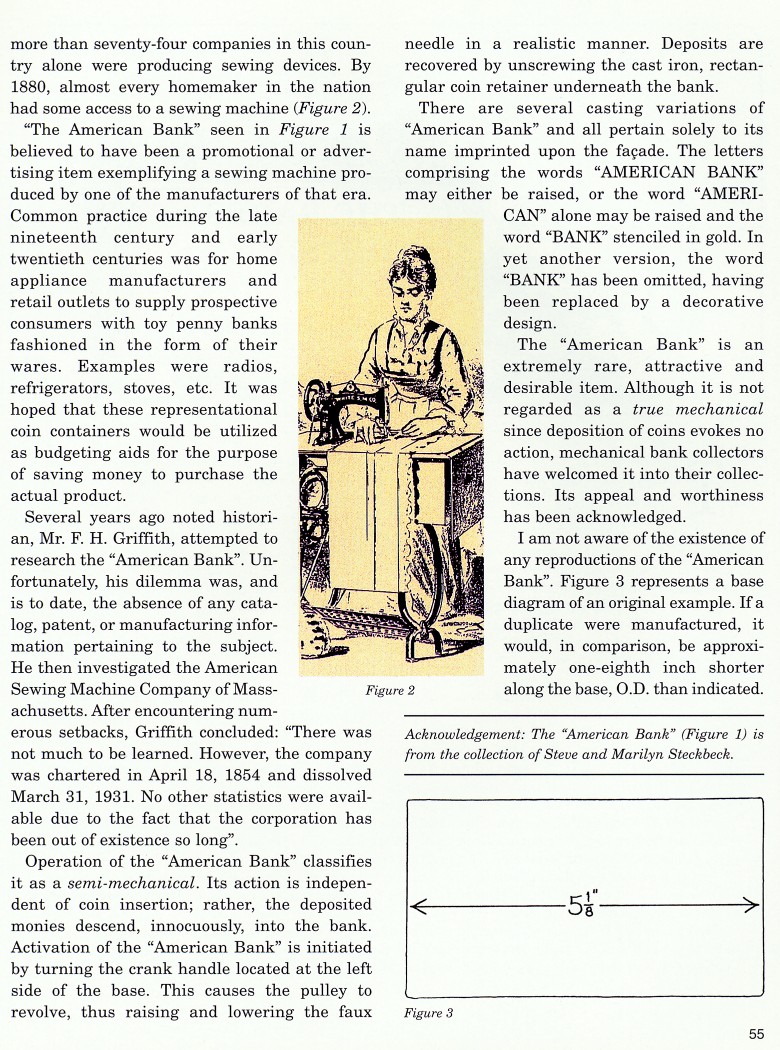|
American Bank
(Sewing Machine)
by Sy Schreckinger – ANTIQUE TOY WORLD Magazine – November, 2001
One of the most ingenious labor saving devices
of modern times has been the sewing machine. This month's featured bank
(Figure 1) owes its origin to this truly remarkable invention.
Created in the United States by Walter Hunt, circa 1834, the first of
these contraptions was referred to as a "lock stitch" sewing machine.
Approximately twelve years later Elias Howe of Spencer, Massachusetts
elaborated upon Hunt's design. Howe's refinement produced a more
functional, utilitarian machine for which he received a patent in 1846.
The essentials of Howe's brainchild still remain the prototype for today's
home-use sewing machine.
As is true of any new, important invention, the sewing machine
elicited the public's curiosity and excitement. Favorable reaction
inspired other inventors to create a plethora of stitching contrivances,
each with its own virtues. By 1860, more than seventy-four companies in
this country alone were producing sewing devices. By 1880, almost every
homemaker in the nation had some access to a sewing machine (Figure 2).
"The American Bank" seen in Figure 1 is believed to have been a
promotional or advertising item exemplifying a sewing machine produced by
one of the manufacturers of that era. Common practice during the late
nineteenth century and early twentieth centuries was for home appliance
manufacturers and retail outlets to supply prospective consumers with toy
penny banks fashioned in the form of their wares. Examples were radios,
refrigerators, stoves, etc. It was hoped that these representational coin
containers would be utilized as budgeting aids for the purpose of saving
money to purchase the actual product.
Several years ago noted historian, Mr. F. H. Griffith, attempted to
research the "American Bank". Unfortunately, his dilemma was, and is to
date, the absence of any catalog, patent, or manufacturing information
pertaining to the subject. He then investigated the American Sewing
Machine Company of Massachusetts. After encountering numerous setbacks,
Griffith concluded: "There was not much to be learned. However, the
company was chartered in April 18, 1854 and dissolved March 31, 1931. No
other statistics were available due to the fact that the corporation has
been out of existence so long".
Operation of the "American Bank" classifies it as a semi-mechanical.
Its action is independent of coin insertion; rather, the deposited monies
descend, innocuously, into the bank. Activation of the "American Bank" is
initiated by turning the crank handle located at the left side of the
base. This causes the pulley to revolve, thus raising and lowering the
faux needle in a realistic manner. Deposits are recovered by unscrewing
the cast iron, rectangular coin retainer underneath the bank.
There are several casting variations of "American Bank" and all
pertain solely to its name imprinted upon the facade. The letters
comprising the words "AMERICAN BANK" may either be raised, or the word
"AMERICAN" alone may be raised and the word "BANK" stenciled in gold. In
yet another version, the word "BANK" has been omitted, having been
replaced by a decorative design.
The "American Bank" is an extremely rare, attractive and desirable
item. Although it is not regarded as a true mechanical since deposition of
coins evokes no action, mechanical bank collectors have welcomed it into
their collections. Its appeal and worthiness has been acknowledged.
I am not aware of the existence of any reproductions of the "American
Bank". Figure 3 represents a base diagram of an original example. If a
duplicate were manufactured, it would, in comparison, be approximately
one-eighth inch shorter along the base, O.D. than indicated.
Acknowledgement: The "American Bank" (Figure 1) is from the
collection of Steve and Marilyn Steckbeck.
|

